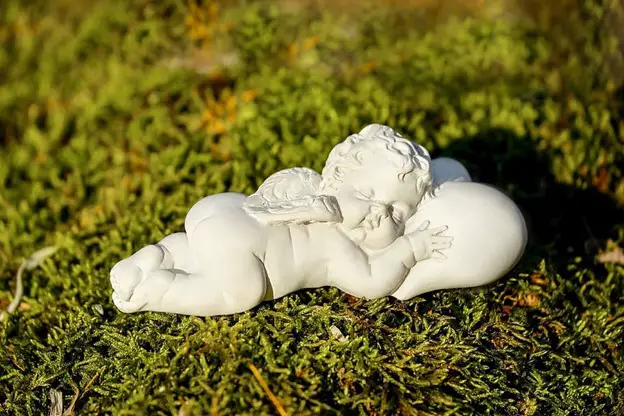Are you just starting as a pottery artist and wondering which clay variant is the right one for you? Well, in most cases, the debate is between Crayola Air Dry Clay and other clay types like earthenware, porcelain, or stoneware. So, what should you pick for your next project? Which is the right clay variant for you? If you are a beginner, learning the nuances of crafting, the key is to work with Crayola Air Dry Clay. But, why is that? What makes Crayola Air Dry Clay a better choice for you? Let us find out!
Why Is Crayola Air Dry Clay A Great Beginner-Friendly Clay?
When starting, you are unaware of the right way to use clay and it is important to pick a very forgiving clay variant. In this context, Crayola Air Dry Clay is a great choice. With this clay, there is no need to fire it in a kiln or bake it in an oven. It tends to dry on its own and harden when exposed to air.
Moreover, it is non-toxic and completely safe for kids. With better malleability, the Crayola Air Dry Clay is easy to work with and ideal for crafting projects for both beginners and experts.
1. Crayola vs. Polymer Clay:
While polymer clay is just as easy on your hands in terms of crafting, there is one additional step to it. A polymer clay project requires baking in an oven for it to harden. This ensures durability which cannot be achieved unless it receives this heat treatment. Moreover, Crayola Air Dry Clay is completely safe for use given its non-toxic nature. While this cannot be said for other air-dry clay brands, Crayola is safe.
On the other hand, polymer clay does release toxic fumes when baked and is also on the expensive side making it unsuitable for beginner crafters or kids.
2. Crayola Air Dry Clay vs. Earthenware/Stoneware/Porcelain:
If you are puzzled about what you should choose between Crayola Air Dry Clay and other pottery clay variants like earthenware, the answer is pretty simple. First, you need to gauge your expertise. If you are a beginner, working with Crayola is the best fit for you. Moreover, you also need to check if you have the required inventory to work with earthenware, stoneware, or porcelain.
When working with pottery clay, you would need to have a wheel for wheel throwing or at least learn hand-building to get things right in terms of shape and size. Moreover, standard pottery clay requires firing at a high temperature to achieve permanency. So, when trying to decode which clay to choose, Crayola Air Dry Clay is no doubt your best bet.
3. Crayola Air-Dry Clay vs. Oil-Based Clay:
For the unversed, oil-based clay is a variant of modeling clay that comprises waxes and oils that serve as its primary binding agent as opposed to water-based components that are primarily found in other clay variants. This composition makes it popular for certain applications in the world of design and art. Given its non-drying nature and high plasticity, artists don’t have to worry about it becoming unworkable or brittle. However, the only fact that it doesn’t dry, ever, is why it cannot be used to create a project that is durable and long-lasting or retains its shape. Moreover, it is used primarily for modeling and learning and not for creating permanent sculptures. It can also leave residues on hand. This is why, in most cases, artists prefer Crayola Air Dry Clay over oil-based clay. You can surely learn crafting techniques using oil-based clay. But, when it comes to creating something permanent, Crayola is the right way to go about it.
Benefits Of Using Crayola Air-Dry Clay
Crayola Air Dry Clay packs in several advantages which makes it a great choice for both simple and complex crafts, especially for beginners.
1. Ease Of Use:
Crayola Air Dry Clay has a pliable and soft texture which is easy to manipulate making it a beginner-friendly choice for adults as well as kids. Unlike other clay variants that might require some kneading and conditioning, Crayola is perfect to use right out of the package with a short learning curve.
2. Safety:
One thing that makes Crayola the best in the market is the fact that it conforms to safety standards and is completely non-toxic. So, even if your kid is using this clay, you don’t have to worry about them being exposed to harmful chemicals.
3. Multiple Color Choices:
Crayola Air Dry Clay is generally available in its standard white or gray color. However, in the past few years, the brand has introduced several colors in their air dry clay line which allows beginners to explore their artistic side without the need for glazing or painting. Yet, if you simply stick to the white or gray air-dry clay, it takes in colors added to it just as well. Simply add some acrylic color while kneading the clay and it will take on the color as required. You can add more color depending on the tint required in the clay.
4. Pocket-Friendly Option:
The best thing about using Crayola Air Dry Clay is the fact that it is pocket-friendly making it the right choice for beginners. If you are just learning about pottery and looking for something that helps you master the art without any significant investment required, the Crayola Air Dry is what you must pick.
Conclusion
Crayola Air Dry Clay offers you affordability, safety, and ease of use as long as you maintain the storage standards by keeping it inside an airtight container. While you can surely work with other clay variants, Crayola is no doubt a safer choice for a hassle-free crafting experience. Experimenting with different clay types can be a rewarding experience in your creative journey, yet, when starting, the key is to work with something that will help you discover what is best for your unique creative vision.







